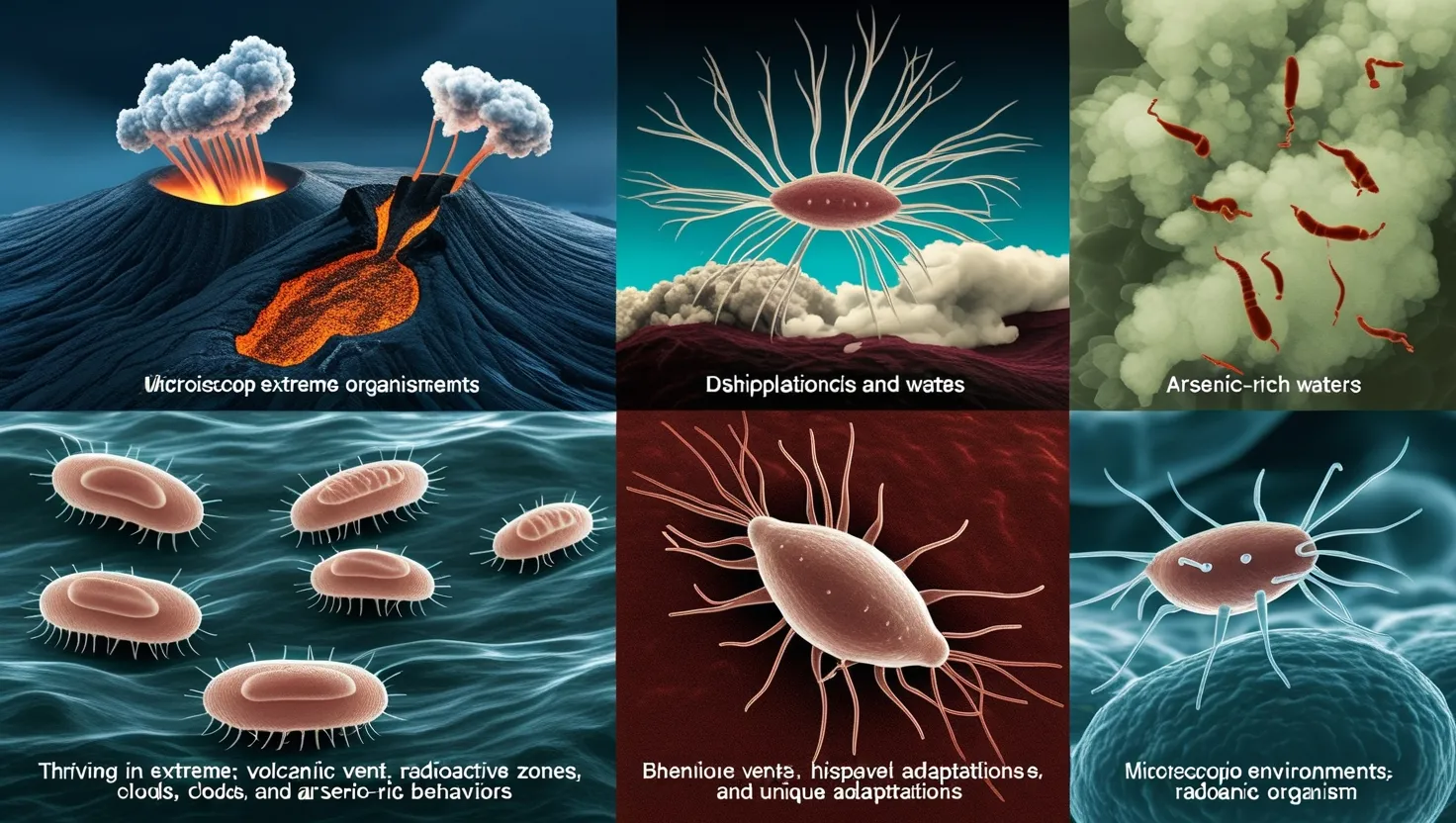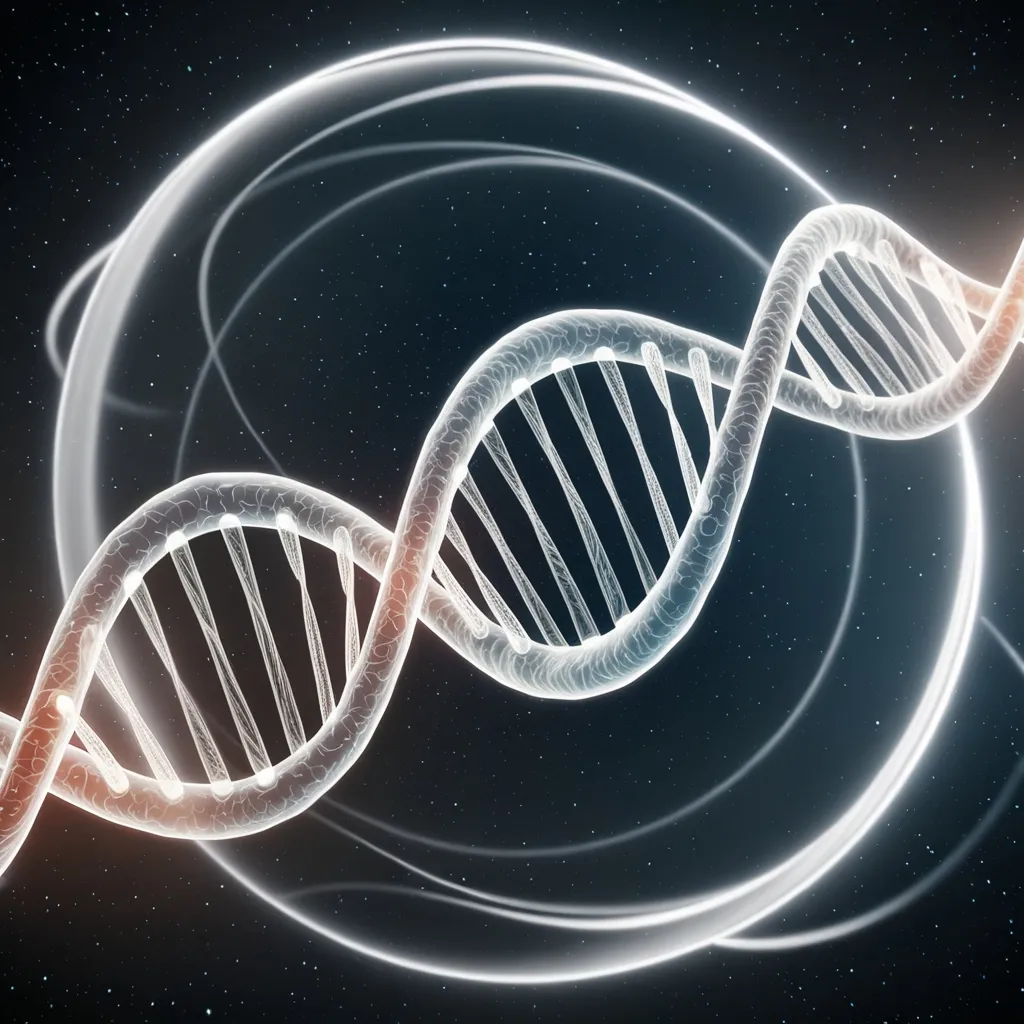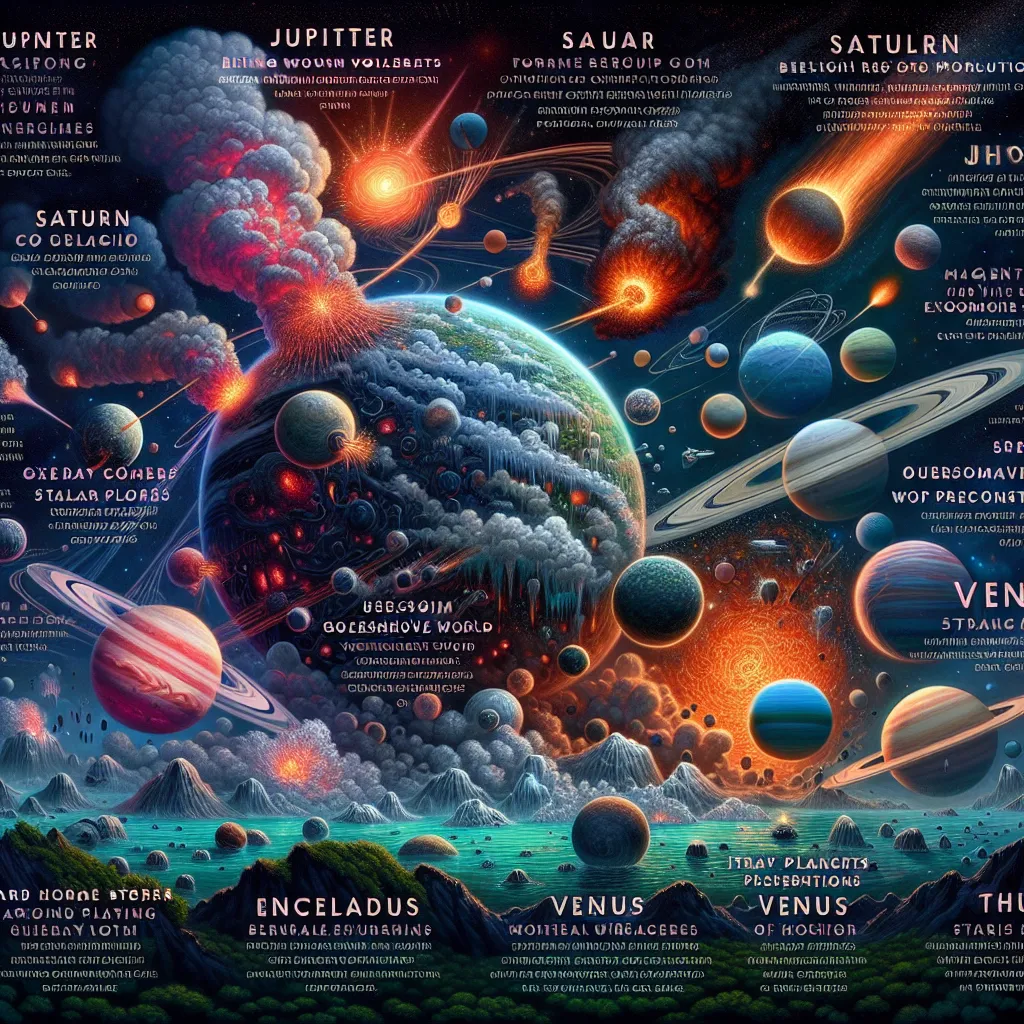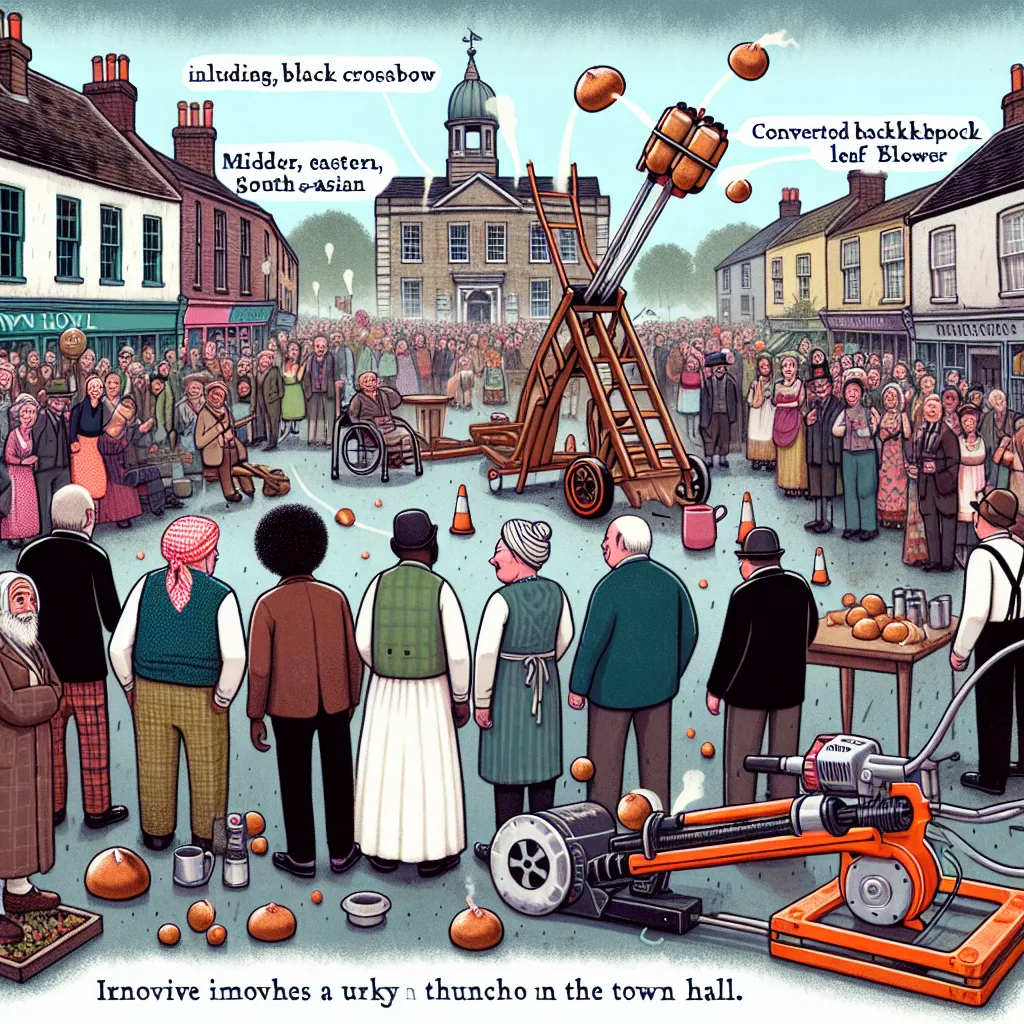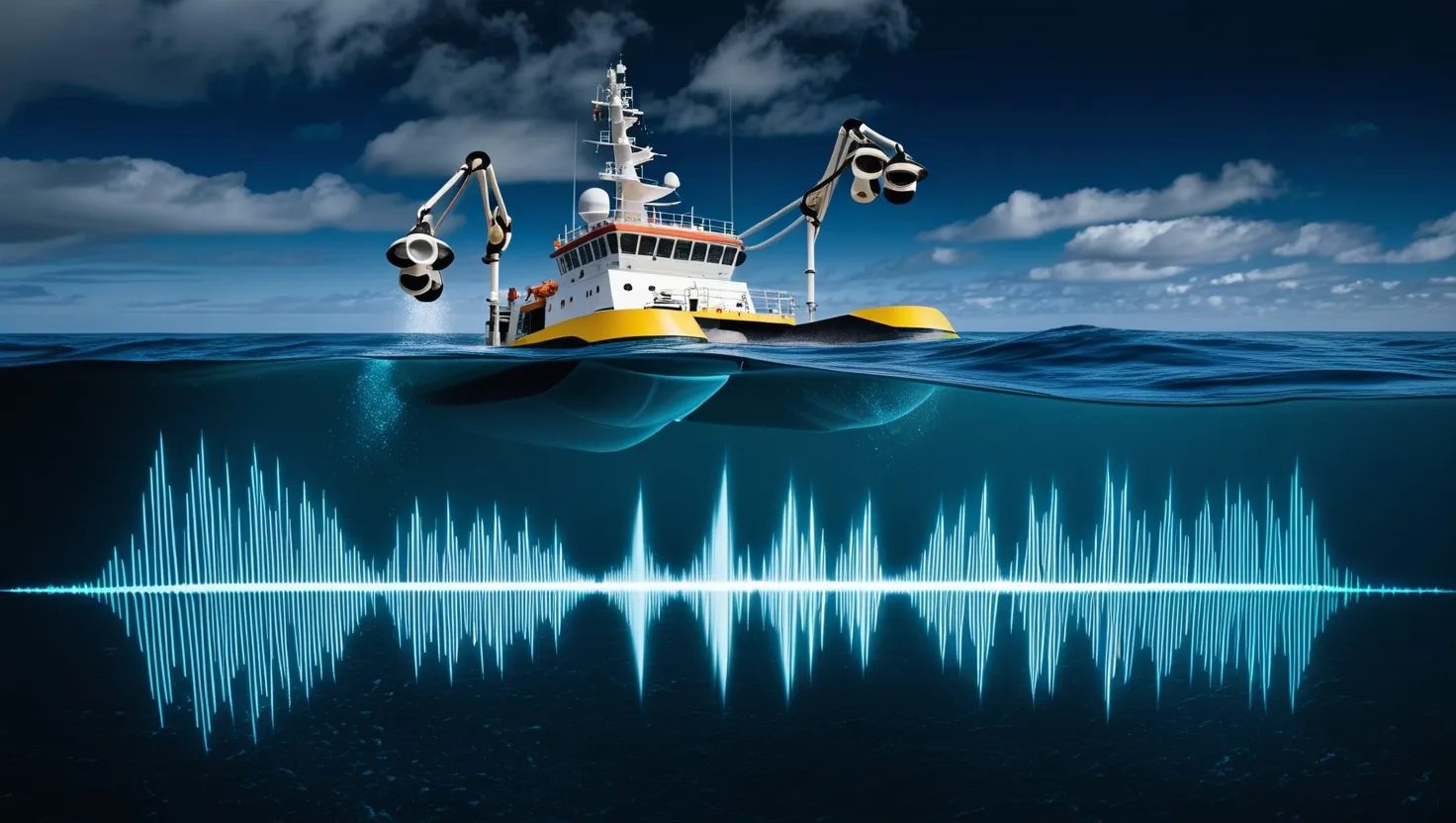In the vast and intricate web of life, there exist microorganisms that defy the conventional limits of survival and thrive in environments that would be hostile to most other forms of life. These microbes, often referred to as extremophiles, have evolved extraordinary adaptations that not only allow them to survive but also to flourish in the most extreme conditions. Let’s delve into some of these remarkable microbial adaptations that challenge our understanding of life.
Thriving in Volcanic Vents
Imagine an environment where temperatures soar, and chemicals are so corrosive they would dissolve most known forms of life. Yet, in the depths of volcanic vents, certain microbes have made this hellish landscape their home. These thermophilic and hyperthermophilic microbes can survive and even grow in temperatures above 80°C, conditions that would denature the proteins and melt the membranes of most other cells.
As the microbiologist Carl Woese once said, “The tree of life is not a tree, but a web.” This web of life is intricately woven with microbes that have adapted to live in the hottest, most chemically hostile environments on Earth. How do they do it? These microbes have developed specialized proteins that remain stable and functional at high temperatures, and some even use unique biomolecules to protect their cellular structures from the extreme conditions.
Bacteria Producing Electricity
In the dark, oxygen-depleted environments of sediments and soils, a special group of bacteria known as electrogenic bacteria have evolved to produce electricity. These microbes use a process called extracellular electron transfer, where they transfer electrons to external surfaces, such as metal oxides or electrodes. This ability not only helps them survive but also has significant implications for biotechnology and environmental remediation.
“Nature is not a place to visit. It is home,” as Gary Snyder once noted. For these electrogenic bacteria, their home is a world of electrical currents and chemical reactions that we are only beginning to understand. Their ability to generate electricity opens up new avenues for sustainable energy solutions and challenges our traditional views of microbial metabolism.
Microbes Surviving in Radioactive Environments
Radioactive environments, with their high levels of ionizing radiation, are among the most inhospitable places on Earth. Yet, certain microbes have adapted to survive and even thrive in these conditions. These radiotolerant microbes have developed mechanisms to repair DNA damage and protect their cellular components from the destructive effects of radiation.
As the physicist Richard Feynman said, “The whole problem of discovering the rules of nature is to find out what the rules are.” For radiotolerant microbes, the rules of nature include an extraordinary ability to withstand radiation that would be lethal to most other organisms. This resilience has important implications for our understanding of life’s potential in environments with high radiation levels, such as those found on other planets or in nuclear waste sites.
Organisms Living in Clouds
Clouds, those ephemeral collections of water droplets and ice crystals, are not just passive weather phenomena; they are also habitats for certain microbes. These cloud-dwelling microbes, known as cloud microbiota, play a crucial role in the Earth’s climate system by influencing cloud formation and precipitation.
“The Earth has music for those who listen,” said George Santayana. For cloud microbiota, this music is the constant interplay of water, air, and microorganisms that shape our weather and climate. How do these microbes survive in such a transient and dynamic environment? They have adapted to live in the water droplets and ice crystals of clouds, influencing the chemical and physical processes that govern cloud behavior.
Bacteria Using Arsenic Instead of Phosphorus
In the saline lakes and hot springs of California, scientists discovered a bacterium that could substitute arsenic for phosphorus in its biomolecules. This discovery challenged our long-held belief that phosphorus is essential for life. These arsenic-loving bacteria, known as arsenophiles, have evolved to incorporate arsenic into their DNA, proteins, and other biomolecules.
As the biologist Lynn Margulis said, “Life on Earth is a complex system that has evolved over billions of years.” The existence of arsenophiles expands our understanding of this complexity, showing that life can adapt to use elements that were previously thought to be toxic. This finding has significant implications for the search for life beyond Earth, as it suggests that life could exist in environments with different chemical compositions.
Microbes with Alternative Genetic Codes
The genetic code, the set of rules that translates DNA sequences into proteins, is generally considered universal. However, certain microbes have evolved alternative genetic codes that deviate from this universal standard. These microbes, found in environments ranging from deep-sea vents to soil, use different codons to specify amino acids, challenging our notion of a single, universal genetic code.
“The genetic code is not a code; it is a set of rules,” noted the geneticist Marshall Nirenberg. For microbes with alternative genetic codes, these rules are different, allowing them to thrive in environments where the standard genetic code might be limiting. This diversity in genetic codes highlights the flexibility and adaptability of microbial life.
Single-Celled Organisms Displaying Complex Behaviors
Single-celled organisms, often viewed as simple and primitive, can exhibit complex behaviors that rival those of multicellular organisms. For example, certain bacteria can form biofilms, communicate through quorum sensing, and even display a form of “memory” by adapting to past environmental conditions.
As the microbiologist E.O. Wilson said, “The social world of insects is a thousand times older than ours.” Similarly, the social world of microbes is ancient and sophisticated, with complex interactions and behaviors that are only beginning to be understood. These complex behaviors challenge our traditional view of single-celled organisms as simple entities and highlight the intricate social lives of microbes.
In conclusion, the microbial world is a realm of extraordinary adaptations and resilience. These microbes push the boundaries of what we consider habitable and force us to redefine our understanding of life. As we continue to explore and study these remarkable organisms, we are reminded of the profound words of the biologist Lewis Thomas: “The urge to explore has its roots in the desire to know the unknown.”
What other secrets lie hidden in the microbial world, waiting to be discovered? How will these discoveries shape our future understanding of life on Earth and beyond? The journey to answer these questions is as fascinating as it is complex, and it is one that promises to reveal even more extraordinary microbial adaptations in the years to come.
